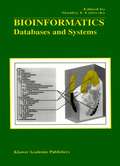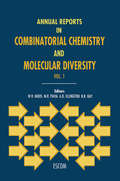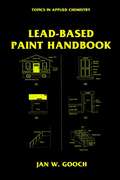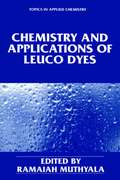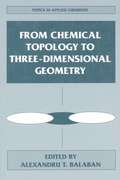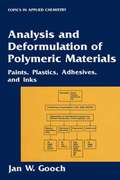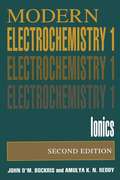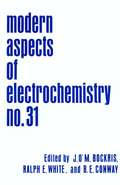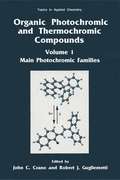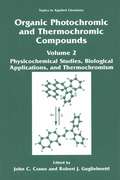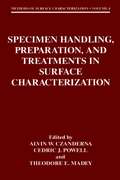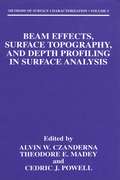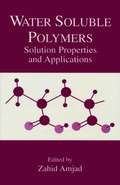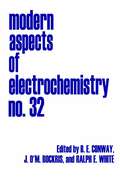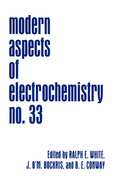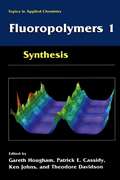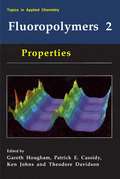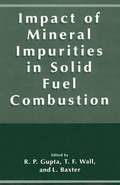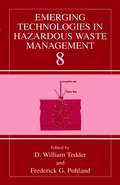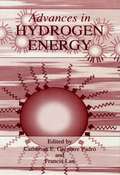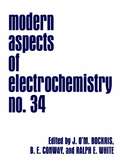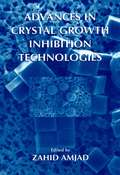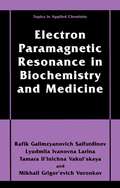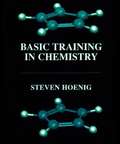- Table View
- List View
Constraints on Language: Aging, Grammar, And Memory
by Susan KemperSusan Kemper A debate about the role of working memory in language processing has become center-most in psycholinguistics (Caplan & Waters, in press; Just & Carpenter, 1992; Just, Carpenter, & Keller, 1996; Waters & Caplan, 1996). This debate concerns which aspects of language processing are vulnerable to working memory limitations, how working memory is best measured, and whether compensatory processes can offset working memory limitations. Age-comparative studies are particularly relevant to this debate for several reasons: difficulties with language and communication are frequently mentioned by older adults and signal the onset of Alzheimer's dementia and other pathologies associated with age; older adults commonly experience working memory limitations that affect their ability to perform everyday activities; the rapid aging of the United States population has forced psychologists and gerontologists to examine the effects of aging on cognition, drawing many investigators to the study of cognitive aging. Older adults constitute ideal population for studying how working memory limitations affect cognitive performance, particularly language and communication. Age-comparative studies of cognitive processes have advanced our understanding of the temporal dynamics of cognition as well as the working memory demands of many types of tasks (Kliegl, Mayr, & Krampe, 1994; Mayr & Kliegl, 1993). The research findings reviewed in this volume have clear implications - for addressing the practical problems of older adults as consumers of leisure ti- reading, radio and television broadcasts, as targets of medical, legal, and financial documents, and as participants in a web of service agencies and volunteer activities.
Bioinformatics: Databases and Systems
by Stanley LetovskyBioinformatics brings computational methods to the analysis and processing of genomic data. Bioinformatics: Databases and Systems focuses on the issues of system building and data curation that dominate the day-to-day concerns of bioinformatics practitioners. Included are chapters by many of today's leading bioinformatics practitioners, describing most of the current paradigms of system building and curation, including both their strengths and weaknesses. Biological topics covered include sequence databases, metabolic pathways, phenotypes, variety collections, gene expression atlases and neuroinformatics. Species range from bacteria to mammals to plants. Software systems and technologies covered include OPM, CORBA, SRS, KLEISLI, ACEDB, Web-based integration and laboratory workflow. Bioinformatics: Databases and Systems provides a valuable introduction for newcomers to the field, and a useful reference for veterans.
Annual Reports in Combinatorial Chemistry and Molecular Diversity (Annual Reports in Combinatorial Chemistry & Molecular Diversity #1)
by W.H. Moos, M.R. Pavia, B.K. Kay and A.D. EllingtonCombinatorial chemistry and molecular diversity approaches to scientific inquiry and novel product R&D have exploded in the 1990s! For example, in the preparation of drug candidates, the automated, permutational, and combinatorial use of chemical building blocks now allows the generation and screening of unprecedented numbers of compounds. Drug discovery - better, faster, cheaper? Indeed, more compounds have been made and screened in the 1990s than in the last hundred years of pharmaceutical research. This first volume covers: (i) combinatorial chemistry, (ii) combinatorial biology and evolution, and (iii) informatics and related topics. Within each section chapters are prepared by experts in the field, including, for example, in Section I: Coverage of mixture pools vs. parallel individual compound synthesis, solution vs. solid-phase synthesis, analytical tools, and automation. Section II highlights selection strategies and library-based evolution, phage display, peptide and nucleic acid libraries. Section III covers databases and library design, high through-put screening, coding strategies vs. deconvolutions, intellectual property issues, deals and collaborations, and successes to date.
Lead-Based Paint Handbook (Topics in Applied Chemistry)
by Jan W. GoochLead-based paint has become a national issue and will continue to be a hi- priority focus ofnational, state, and local agencies until there is no lead-based paint in the United States. Lead-based paint has become a tremendous health hazard for people and animals. Lead-based paint has been in widespread use throughout Europe and the United States. Lead has been known to be a health hazard since the time ofPliny the Elder (A. D. 23–79), but it was deemed that the advantages of lead in paint outweighed the health hazards. There has been a change in outlook, and in 1973 the U. S. Congress banned all lead paint from residential structures. A voluminous number of law suits have been initiated since, and continue to be litigated with the purpose of determining the parties responsible for the lead poisoning of children and others and to exact the indemnities. Lead-based paint is still authorized for use on bridges and nonresidential structures, and thousands of city, state, military, and federal government housing projects still contain lead-based paint. This paint must be removed if these dwellings are to be safe living quarters, especially for children. Aba- ment techniques continue to be evaluated; some have been used successfully. Lead-based paint abatement will continue into the next century, and it is hoped that this comprehensive volume will serve as a guide for those seriously interested in this important subject.
Chemistry and Applications of Leuco Dyes (Topics in Applied Chemistry)
by Ramaiah MuthyalaContributions by scientists working in international laboratories provide the novice researcher with synthetic data and high-technology applications of leuco dyes. Covering leuco dye classes that exhibit reasonable stability, the book discusses photochromic materials that have wide-ranging applications in memory technology, leuco dyes for color photography, and a special class of dyes formulated by reduction instead of the oxidation process.
From Chemical Topology to Three-Dimensional Geometry (Topics in Applied Chemistry)
by Alexandru T. BalabanEven high-speed supercomputers cannot easily convert traditional two-dimensional databases from chemical topology into the three-dimensional ones demanded by today's chemists, particularly those working in drug design. This fascinating volume resolves this problem by positing mathematical and topological models which greatly expand the capabilities of chemical graph theory. The authors examine QSAR and molecular similarity studies, the relationship between the sequence of amino acids and the less familiar secondary and tertiary protein structures, and new topological methods.
Analysis and Deformulation of Polymeric Materials: Paints, Plastics, Adhesives, and Inks (Topics in Applied Chemistry)
by Jan W. GoochVolume 1: Ionics
by John O'M. Bockris Amulya K.N. ReddyThis book had its nucleus in some lectures given by one of us (J. O’M. B. ) in a course on electrochemistry to students of energy conversion at the University of Pennsyl- nia. It was there that he met a number of people trained in chemistry, physics, biology, metallurgy, and materials science, all of whom wanted to know something about electrochemistry. The concept of writing a book about electrochemistry which could be understood by people with very varied backgrounds was thereby engendered. The lectures were recorded and written up by Dr. Klaus Muller as a 293-page manuscript. At a later stage, A. K. N. R. joined the effort; it was decided to make a fresh start and to write a much more comprehensive text. Of methods for direct energy conversion, the electrochemical one is the most advanced and seems the most likely to become of considerable practical importance. Thus, conversion to electrochemically powered transportation systems appears to be an important step by means of which the difficulties of air pollution and the effects of an increasing concentration in the atmosphere of carbon dioxide may be met. Cor- sion is recognized as having an electrochemical basis. The synthesis of nylon now contains an important electrochemical stage. Some central biological mechanisms have been shown to take place by means of electrochemical reactions. A number of American organizations have recently recommended greatly increased activity in training and research in electrochemistry at universities in the United States.
Modern Aspects of Electrochemistry (Modern Aspects of Electrochemistry #31)
by Ralph E. White Brian E. Conway John O'M. BockrisProf. Jerzy Sobkowski starts off this 31st volume of Modern Aspects of Electrochemistry with a far-ranging discussion of experimental results from the past 10 years of interfacial studies. It forms a good background for the two succeeding chapters. The second chapter is by S. U. M. Khan on quantum mechanical treatment of electrode processes. Dr. Khan’s experience in this area is a good basis for this chapter, the contents of which will surprise some, but which as been well refereed. Molecular dynamic simulation is now a much-used technique in physical electrochemistry and in the third chapter Ilan Benjamin has written an account that brings together information from many recent publications, sometimes confirming earlier modeling approaches and sometimes breaking new territory. In Chapter 4, Akiko Aramata’s experience in researching single crystals is put to good advantage in her authoritative article on under- tential deposition. Finally, in Chapter 5, the applied side of electrochemistry is served by Bech-Neilsen et al. in the review of recent techniques for automated measurement of corrosion. J. O’M. Bockris, Texas A&M University B. E. Conway, University of Ottawa R. E. White, University of South Carolina Contents Chapter 1 METAL/SOLUTION INTERFACE: AN EXPERIMENTAL APPROACH Jerzy Sobkowski and Maria Jurkiewicz-Herbich I. Introduction.............................................. 1 II. Molecular Approach to the Metal/Solution Interface............. 3 1. Double-Layer Structure: General Considerations .......... 3 2. Solid Metal/Electrolyte Interface.......................... 8 3. Methods Used to Study Properties ofthe Metal/Solution Interface: Role of the Solvent and the Metal............. 15 The Thermodynamic Approach to the Metal/Solution Interface 35 III.
Organic Photochromic and Thermochromic Compounds: Main Photochromic Families (Topics in Applied Chemistry)
by John C. Crano Robert J. GuglielmettiThis major treatise on photochromism involving organic molecules and derived systems offers a detailed examination of the synthesis and specific photochromic properties of the best-known photochromic and thermochromic compounds. It includes practical information and commercial applications for known photochromic families.
Organic Photochromic and Thermochromic Compounds: Volume 2: Physicochemical Studies, Biological Applications, and Thermochromism (Topics in Applied Chemistry)
by John C. Crano Robert J. GuglielmettiSpecimen Handling, Preparation, and Treatments in Surface Characterization (Methods of Surface Characterization #4)
by Alvin W. Czanderna Cedric J. Powell Theodore E. MadeyWith the development in the 1960s of ultrahigh vacuum equipment and techniques and electron, X-ray, and ion beam techniques to determine the structure and composition of interfaces, activities in the field of surface science grew nearly exponentially. Today surface science impacts all major fields of study from physical to biological sciences, from physics to chemistry, and all engineering disciplines. The materials and phenomena characterized by surface science range from se- conductors, where the impact of surface science has been critical to progress, to metals and ceramics, where selected contributions have been important, to bio- terials, where contributions are just beginning to impact the field, to textiles, where the impact has been marginal. With such a range of fields and applications, questions about sample selection, preparation, treatment, and handling are difficult to cover completely in one review article or one chapter. Therefore, the editors of this book have assembled a range of experts with experience in the major fields impacted by surface characterization. It is the only book which treats the subject of sample handling, preparation, and treatment for surface characterization. It is full of tricks, cautions, and handy tips to make the laboratory scientist’s life easier. With respect to organization of the book, the topics range from discussion of vacuum to discussion of biological, organic, elemental or compound samples, to samples prepared ex situ or in situ to the vacuum, to deposition ofthin films. Generic considerations of sample preparation are also given.
Beam Effects, Surface Topography, and Depth Profiling in Surface Analysis (Methods of Surface Characterization #5)
by Alvin W. Czanderna Cedric J. Powell Theodore E. MadeyMany books are available that detail the basic principles of the different methods of surface characterization. On the other hand, the scientific literature provides a resource of how individual pieces of research are conducted by particular labo- tories. Between these two extremes the literature is thin but it is here that the present volume comfortably sits. Both the newcomer and the more mature scientist will find in these chapters a wealth of detail as well as advice and general guidance of the principal phenomena relevant to the study of real samples. In the analysis of samples, practical analysts have fairly simple models of how everything works. Superimposed on this ideal world is an understanding of how the parameters of the measurement method, the instrumentation, and the char- teristics of the sample distort this ideal world into something less precise, less controlled, and less understood. The guidance given in these chapters allows the scientist to understand how to obtain the most precise and understood measu- ments that are currently possible and, where there are inevitable problems, to have clear guidance as the extent of the problem and its likely behavior.
Water Soluble Polymers: Solution Properties and Applications
by Zahid AmjadThis volume contains a series of papers originally presented at the symposium on Water Soluble Polymers: Solution Properties and Applications, sponsored by the Division of Colloids and Surface Chemistry of the American Chemical Society. The symposium took place in Las Vegas City, Nevada on 9 to 11th September, 1997 at the 214th American Chemical Society National Meeting. Recognized experts in their - spective fields were invited to speak. There was a strong attendance from academia, g- ernment, and industrial research centers. The purpose of the symposium was to present and discuss recent developments in the solution properties of water soluble polymers and their applications in aqueous systems. Water soluble polymers find applications in a number of fields of which the following may be worth mentioning: cosmetics, detergent, oral care, industrial water treatment, g- thermal, wastewater treatment, water purification and reuse, pulp and paper production, sugar refining, and many more. Moreover, water soluble polymers play vital role in the oil industry, especially in enhanced oil recovery. Water soluble polymers are also used in ag- culture and controlled release pharmaceutical applications. Therefore, a fundamental kno- edge of solution properties of these polymers is essential for most industrial scientists. An understanding of the basic phenomena involved in the application of these polymers, such as adsorption and interaction with different substrates (i. e. , tooth enamel, hair, reverse - mosis membrane, heat exchanger surfaces, etc. ) is of vital importance in developing high performance formulations for achieving optimum efficiency of the system.
Modern Aspects of Electrochemistry (Modern Aspects of Electrochemistry #32)
by John O'M. Bockris Ralph E. White Brian E. ConwayRecognized experts present incisive analysis of both fundamental and applied problems in this continuation of a highly acclaimed series. Topics discussed include: A thorough and mathematical treatment of periodic phenomena, with consideration of new theories about the transition between `order' and `chaos'; Impedance spectroscopy as applied to the study of kinetics and mechanisms of electrode processes; The use of stoichiometric numbers in mechanism analysis; The electro-osmotic dewatering of clays with important implications for the processing of industrial waste and geotechnical; stabilization; Magnetic effects in electrolytic processes and the electrolytic Hall effect; and The computer analysis and modeling of mass transfer and fluid flow. These authoritative studies will be invaluable for researchers in engineering, electrochemistry, analytical chemistry, materials science, physical chemistry, and corrosion science.
Modern Aspects of Electrochemistry (Modern Aspects of Electrochemistry #33)
by Ralph E. White B. E. Conway J. O'M BockrisRecognized experts present incisive analysis of both fundamental and applied problems in this continuation of a highly acclaimed series. Topics discussed include: A review of the literature on the potential-of-zero charge by Trasatti and Lust. A thorough review and discussion of nonequilibrium fluctuations in corrosion processes. A wide-ranging discussion of conducting polymers, electrochemistry, and biomimicking processes. Microwave (photo)electrochemistry, from its origins to today's research opportunities, including its relation to electrochemistry. New fluorine cell design, from model development through preliminary engineering modeling, laboratory tests, and pilot plant tests. A comprehensive account of the major and rapidly developing field of the electrochemistry of electronically conducting polymers and their applications. These authoritative studies will be invaluable for researchers in engineering, electrochemistry, analytical chemistry, materials science, physical chemistry, and corrosion science.
Fluoropolymers 1: Synthesis (Topics in Applied Chemistry)
by Patrick E. Cassidy Theodore Davidson Ken Johns Gareth G. HoughamThe fluorine atom, by virtue of its electronegativity, size, and bond strength with carbon, can be used to create compounds with remarkable properties. Small molecules containing fluorine have many positive impacts on everyday life of which blood substitutes, pharmaceuticals, and surface modifiers are only a few examples. Fluoropolymers, too, while traditionally associated with extreme hi- performance applications have found their way into our homes, our clothing, and even our language. A recent American president was often likened to the tribology of PTFE. Since the serendipitous discovery of Teflon at the Dupont Jackson Laboratory in 1938, fluoropolymers have grown steadily in technological and marketplace importance. New synthetic fluorine chemistry, new processes, and new apprec- tion of the mechanisms by which fluorine imparts exceptional properties all contribute to accelerating growth in fluoropolymers. There are many stories of harrowing close calls in the fluorine chemistry lab, especially from the early years, and synthetic challenges at times remain daunting. But, fortunately, modern techniques and facilities have enabled significant strides toward taming both the hazards and synthetic uncertainties. In contrast to past environmental problems associated with fluorocarbon refrigerants, the exceptional properties of fluorine in polymers have great environmental value. Some fluoropolymers are enabling green technologies such as hydrogen fuel cells for automobiles and oxygen-selective membranes for cleaner diesel combustion.
Fluoropolymers 2: Properties (Topics in Applied Chemistry)
by Gareth Hougham Patrick E. Cassidy Theodore Davidson Ken JohnsThe fluorine atom, by virtue of its electronegativity, size, and bond strength with carbon, can be used to create compounds with remarkable properties. Small molecules containing fluorine have many positive impacts on everyday life of which blood substitutes, pharmaceuticals, and surface modifiers are only a few examples. Fluoropolymers, too, while traditionally associated with extreme high performance applications have found their way into our homes, our clothing, and even our language. A recent American president was often likened to the tribology of PTFE. Since the serendipitous discovery of Teflon at the DuPont Jackson Laboratory in 1938, fluoropolymers have grown steadily in technological and marketplace importance. New synthetic fluorine chemistry, new processes, and new apprecia tion of the mechanisms by which fluorine imparts exceptional properties all contribute to accelerating growth in fluoropolymers. There are many stories of harrowing close calls in the fluorine chemistry lab, especially from the early years, and synthetic challenges at times remain daunting. But, fortunately, modem techniques and facilities have enabled significant strides toward taming both the hazards and synthetic uncertainties, In contrast to past environmental problems associated with fluorocarbon refrigerants, the exceptional properties of fluorine in polymers have great environmental value. Some fluoropolymers are enabling green technologies such as hydrogen fuel cells for automobiles and oxygen selective membranes for cleaner diesel combustion.
Impact of Mineral Impurities in Solid Fuel Combustion
by R. Gupta T. Wall L. BaxterThis book contains papers presented at the Engineering Foundation Conference on mineral matter in fuels held on November 2-7, 1997 in Kona, Hawaii. The conference is one of a continuing series that was initiated by the CEGB Mar- wood Engineering Laboratories in 1963. The conference was to be eventually organised by the Engineering Foundation as the need for multi-disciplinary work related to c- trolling ash effects in combustors became apparent. The conference covers both the science and the applications. The papers also present case histories, particularly for current fuel technologies, developments in advanced technologies for power generation and mathematical modelling of these processes. Developments since 1963 have been slow, but steady, due to the complexity of the chemical and physical processes involved. However, the research presented here displays great improvement in our understanding of the mechanisms by which mineral matter will influence fuel use. Steve Benson from EERC presented a review and current status of issues related to ash deposition in coal combustion and gasification. The application of new analytical tools, which have been detailed in the previous conferences, is presented. These include CCSEM, as well as new techniques for char- terising sintering of ash, such as TMA, image analysis, X-ray diffraction crystallography and thermal analysis. The new analytical techniques were extended to encompass widely differing fuels such as biomass. Ole H Larsen from ELSAM Denmark presented a review of these advanced techniques.
Emerging Technologies in Hazardous Waste Management 8
by D. William Tedder Frederick G. PohlandSeveral long-term trends in technology evolution have become apparent since these symposia began in 1989. Earlier presenters more frequently discussed treatment methods involving harsh and extensive human intervention. As the symposia have continued, the number of presentations describing extremely harsh and expensive treatment technologies have gradually been supplanted by more subtle and gentler methods. Such methods include subsurface-engineered barriers, phytoremediation, and bioremediation. Nineteen manuscripts were selected for inclusion in this volume, based upon peer review, scientific merit, the editors' perceptions of lasting value or innovative features, and the general applicability of either the technology itself or the scientific methods and scholarly details provided by the authors. General topics include: soil treatment, groundwater treatment, and radioactive waste treatment.
Advances in Hydrogen Energy
by Catherine E. Grégoire Padró Francis LauIn the future, our energy systems will need to be renewable and sustainable, efficient and cost-effective, convenient and safe. Hydrogen has been proposed as the perfect fuel for this future energy system. The availability of a reliable and cost-effective supply, safe and efficient storage, and convenient end use of hydrogen will be essential for a transition to a Hydrogen Economy. Research is being conducted throughout the world for the development of safe, cost-effective hydrogen production, storage, and end-use technologies that support and foster this transition. This book is a collection of important research and analysis papers on hydrogen production, storage, and end-use technologies that were presented at the American Chemical Society National Meeting in New Orleans, Louisiana, USA, in August 1999.
Modern Aspects of Electrochemistry (Modern Aspects of Electrochemistry #34)
by Ralph E. White Brian E. Conway John O'M. BockrisRecognized experts present incisive analysis of both fundamental and applied problems in this continuation of a highly-acclaimed series. Topics discussed include: The way in which electrochemical systems may function as on a single electrode; The foundational area of voltaic measurements at liquid interfaces; Direct methanol fuel cells, which would avoid the unpleasant necessity faced by the current general of fuel cells - namely, using hydrogen; Dynamic processes in molten salts; Electrochemical techniques and Microbial Induced Corrosion (MIC).
Advances in Crystal Growth Inhibition Technologies
by Zahid AmjadIn this book, academic researchers and technologists will find important information on the interaction of polymeric and non-polymeric inhibitors with a variety of scale forming crystals such as calcium phosphates, calcium carbonate, calcium oxalates, barium sulfate, calcium pyrophosphates, and calcium phosphonates. Moreover, the book delivers information to plant managers and formulators who would like to broaden and deepen their knowledge about processes involved in precipitation of sparingly soluble salts and learn more about the inhibitory aspects of various commercially available materials. Furthermore, experienced researchers will obtain fruitful and inspiring ideas from the easily accessible information about overlapping research areas, which will promote discoveries of new inhibitors (synthetic and/or natural) for the currently unmet challenges.
Electron Paramagnetic Resonance in Biochemistry and Medicine (Topics in Applied Chemistry)
by Rafik Galimzyanovich Sajfutdinov Lyudmila Ivanovna Larina Tamara Il'inichna Vakul'skaya Mikhail Grigor'evich VoronkovElectron Paramagnetic Resonance (EPR) spectroscopy - also sometimes termed Electron Spin Resonance spectroscopy - has manifold potential uses in biochemistry and medicine. The paramount importance of EPR spectroscopy applied to biological tissues and fluids is that it identifies the changes in redox processes that contribute to disease. EPR spectroscopy has come a long way from its original use to detect malignant tumors. For example, the development and later refinement of methods of low-temperature registration of biological tissues widened the scope of EPR spectroscopy. Innovations made possible by the introduction of spin labels, probes, and traps made EPR spectroscopy ever more applicable to biochemistry and medicine, to the point where in vivo studies are being carefully considered. This comprehensive book discusses spectra of many tissues and bodily fluids, and the quantitative nature of paramagnetic centers in both normal individuals and patients suffering from a variety of diseases. Special attention is given to the EPR examination of bio-molecules, such as enzymes, polypeptides, vitamins, lipids, hydrocarbons, etc., which play an essential role in human activity. This book will be of great interest to physicians specializing in many different areas. Similarly, biologists, biochemists, biophysicists, and chemists will find this book very useful. It has also been written so that it may be used as a textbook at graduate level.
Basic Training in Chemistry
by Steven HoenigBasic Training in Chemistry is unique in that it gathers into one source the essential information that is usually widely dispersed. This book can be used as a quick reference guide to the different disciplines of Chemistry: the areas covered are General, Inorganic, Organic, and Instrumental Analysis. Although comprehensive in nature, Basic Training in Chemistry is not meant to replace any standard textbook but rather to be a supplement or additional source of information, or even a comprehensive review guide. Basic Training in Chemistry is a useful addition to any academic or commercial laboratory setting where access to a wide variety of information is needed. The book can be an exceptional source of information for the undergraduate or graduate student as well as for the experienced chemist. Anyone needing a single source of information covering several different disciplines will find this book to be an excellent addition to their usual references.

